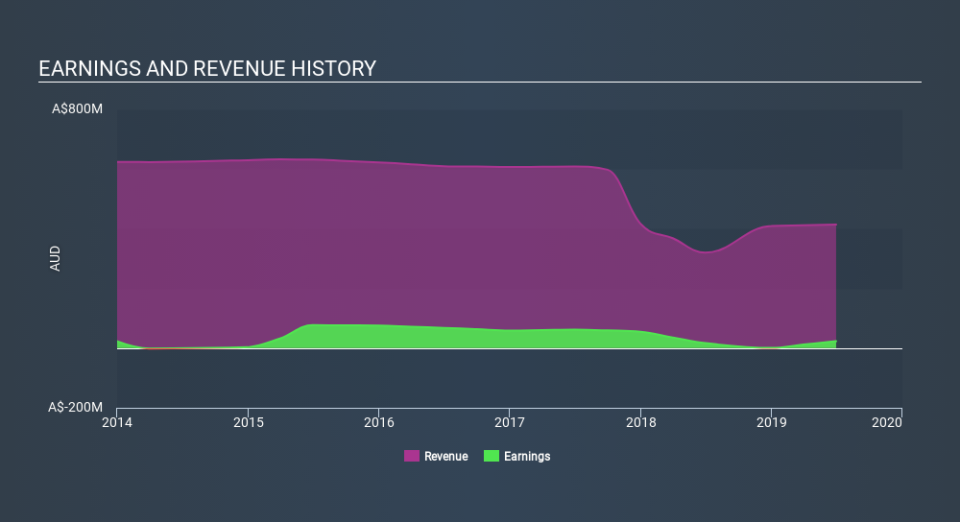Those Who Purchased Asaleo Care (ASX:AHY) Shares Five Years Ago Have A 36% Loss To Show For It

While not a mind-blowing move, it is good to see that the Asaleo Care Limited (ASX:AHY) share price has gained 16% in the last three months. But over the last half decade, the stock has not performed well. In fact, the share price is down 36%, which falls well short of the return you could get by buying an index fund.
Check out our latest analysis for Asaleo Care
In his essay The Superinvestors of Graham-and-Doddsville Warren Buffett described how share prices do not always rationally reflect the value of a business. One imperfect but simple way to consider how the market perception of a company has shifted is to compare the change in the earnings per share (EPS) with the share price movement.
Asaleo Care became profitable within the last five years. That would generally be considered a positive, so we are surprised to see the share price is down. Other metrics might give us a better handle on how its value is changing over time.
Revenue is actually up over the time period. So it seems one might have to take closer look at the fundamentals to understand why the share price languishes. After all, there may be an opportunity.
The graphic below depicts how earnings and revenue have changed over time (unveil the exact values by clicking on the image).
We know that Asaleo Care has improved its bottom line lately, but what does the future have in store? So it makes a lot of sense to check out what analysts think Asaleo Care will earn in the future (free profit forecasts).
What about the Total Shareholder Return (TSR)?
We'd be remiss not to mention the difference between Asaleo Care's total shareholder return (TSR) and its share price return. The TSR is a return calculation that accounts for the value of cash dividends (assuming that any dividend received was reinvested) and the calculated value of any discounted capital raisings and spin-offs. Dividends have been really beneficial for Asaleo Care shareholders, and that cash payout explains why its total shareholder loss of 20%, over the last 5 years, isn't as bad as the share price return.
A Different Perspective
Asaleo Care shareholders gained a total return of 20% during the year. But that was short of the market average. But at least that's still a gain! Over five years the TSR has been a reduction of 4.3% per year, over five years. So this might be a sign the business has turned its fortunes around. It's always interesting to track share price performance over the longer term. But to understand Asaleo Care better, we need to consider many other factors. For instance, we've identified 2 warning signs for Asaleo Care (1 makes us a bit uncomfortable) that you should be aware of.
But note: Asaleo Care may not be the best stock to buy. So take a peek at this free list of interesting companies with past earnings growth (and further growth forecast).
Please note, the market returns quoted in this article reflect the market weighted average returns of stocks that currently trade on AU exchanges.
If you spot an error that warrants correction, please contact the editor at editorial-team@simplywallst.com. This article by Simply Wall St is general in nature. It does not constitute a recommendation to buy or sell any stock, and does not take account of your objectives, or your financial situation. Simply Wall St has no position in the stocks mentioned.
We aim to bring you long-term focused research analysis driven by fundamental data. Note that our analysis may not factor in the latest price-sensitive company announcements or qualitative material. Thank you for reading.

 Yahoo Finance
Yahoo Finance 
